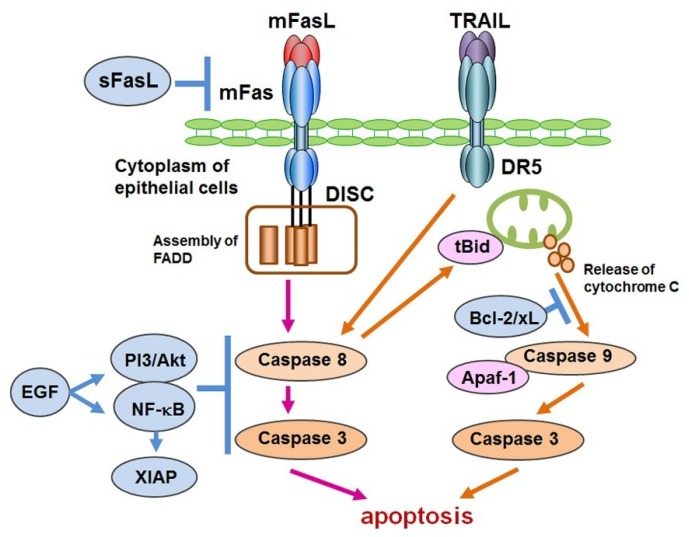Figure 2.
Inhibition of apoptosis mediated by mFas and TRAIL. The pathway for the induction of mFas-mediated apoptosis consists of death-inducing signaling complex (DISC) formation followed by the assembly of Fas-associated protein with death domain (FADD), and the cleavage of caspases 8 and 3. One of the inhibitory mechanisms of Fas-mediated apoptosis is mediated by epidermal growth factor (EGF) and a downstream PI3K/Akt and NF-κB pathway including the expression of X-chromosome-linked inhibitor of apoptosis (XIAP). Another candidate is sFasL, which is shown to inhibit mFas-mediated apoptosis by combining with mFas. Although pro-apoptotic pathway in SS is similar to general apoptotic pathway, EGF-mediated inhibition of apoptosis might be specific in SS. TNF-related apoptosis-inducing ligand (TRAIL) rapidly induces the apoptosis of cultured salivary gland epithelial cells (SGECs), in which a mitochondrial pathway that includes a release of cytochrome C, the cleavage of caspase 9, and the activation of Apaf-1 after the truncation of Bid is also involved. Bcl-2 family molecules such as Bcl-2 and Bcl-xL are considered to inhibit this mitochondrial pathway by inhibiting cytochrome C release.

